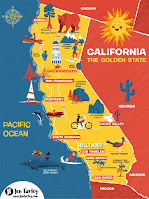Tuesday, January 02, 2024A New Year But An Old Population Trend; State Continues To Take It Slow; Very Slow, And: Departing Californians Take A Pass On NMIt was once shocking that a sunbelt state like ours could experience a decline or stagnation in population. After all it had never happened since statehood in 1912 but now it's par for the course--and 2024 continues this new normal. New census figures estimate the July 2023 state population at 2.114 million up from 2.117 million in July 2022 but below the 2.118 million recorded in July 2020. Why? Much of rural New Mexico has stagnated for over a decade. Retirees can pick and choose where to live but for those without generational wealth they must hit the road for the job opportunities necessary to make a living. Also, the explosion in high tech, the uber-growth industry of this century, has basically bypassed the state. The workforce is lacking and our remoteness is not looked upon favorably by the tech titans. That has led to more stagnation.. ABQ, sometimes referred to as the "state's economic engine," is still in idle when it comes to population. The census estimate for July '22 ('23 not released yet) puts the number of city residents at 561,000. For context, 13 years ago--in 2010--the city had a population of 545,852. For Bernalillo County, home to ABQ and the state's largest county, the stagnation remains evident with the July '22 estimate putting the population at 672,508. In 2010 the county had 662,554 souls. That's basically a no growth environment, Looking at the ABQ metro area that includes BernCo as well as the growth counties of Valencia and Sandoval, the numbers are slightly more robust. Macrotrends estimates the metro population at 955,000. In 2020 the metro registered 915,000 residents. But estimates by Macrotrends state that the metro will not hit 1 million in population until 2028 even though it is only 45,000 residents shy of that mark. The estimate signals a slowdown in metro area growth from about 1.5 percent annually to less than half a percent which would be a historically low rate. FUTURE IMPACT Population growth may worry economic planners and younger people who are hoping to stay here and land a good job but the state has always harbored a soft spot for slow growth. The slogan "Don't Californicate New Mexico" has resonated here for decades. Also, the state is home to one of the more powerful environmental movements whose chief concern is protecting the state's vast lands from human destruction not putting more folks on them. Since there's been a decade or more of little or no population growth the continuing trend could mean more off the same in the future: An aging population with an increase in retirees; continued challenges in bringing in outside economic development; shrinking school enrollments; a one party political state as conservative rural areas continue to lose population to the cities and an economy mainly driven by the oil fields, the national laboratories and the government workforce, including a top heavy education bureaucracy. On the other hand, with epic revenue surpluses the state has the resources to make itself more attractive to economic development and for making the current welfare state more pliable so it advances the large swath of disadvantaged residents and propels some into the modern day workforce. The shortage of workers in key state departments such as Corrections, CYFD, and PED is one aspect of the problem. The other is fear that state government policies, like the population, are simply too stagnant to take advantage of the huge mountain of dollars available in this unprecedented oil boom. NO CALIFORNICATING Despite what some in the real estate business may believe, the California depopulation movement is making little impact on New Mexico: Californians looking to escape the high cost of living are apparently moving in droves to Arizona more than anywhere else in the U.S., new data shows.
That's according to the U.S. Census Bureau, which estimates Phoenix has been a popular relocation destination not only for Californians but all Americans between 2017 and 2021. Of that figure, 1 in every 5 people (about 184,000 people) who relocated to Arizona during that time frame came from California. The state with the next highest number of movers was Washington at just over 50,000. Texas, Illinois, and Colorado rounded out the top five states. NOT ALONE New Mexico is not alone when it comes to a slow growth mode. In fact the planet as a whole is looking at more subdued times ahead when it comes to population: . . .The world population. . . on New Year’s Day will stand at more than 8 billion people, according to the U.S. Census Bureau.
The worldwide growth rate in the past year was just under 1%. At the start of 2024, 4.3 births and two deaths are expected worldwide every second. The growth rate for the United States in the past year was 0.53%, about half the worldwide figure. The U.S. added 1.7 million people and will have a population on New Year’s Day of 335.8 million people.
If the current pace continues through the end of the decade, the 2020s could be the slowest-growing decade in U.S. history, yielding a growth rate of less than 4% over the 10-year-period from 2020 to 2030, said William Frey, a demographer at The Brookings Institution. This is the Home of New Mexico Politics E-mail your news and comments. (newsguy@yahoo.com |
  |




